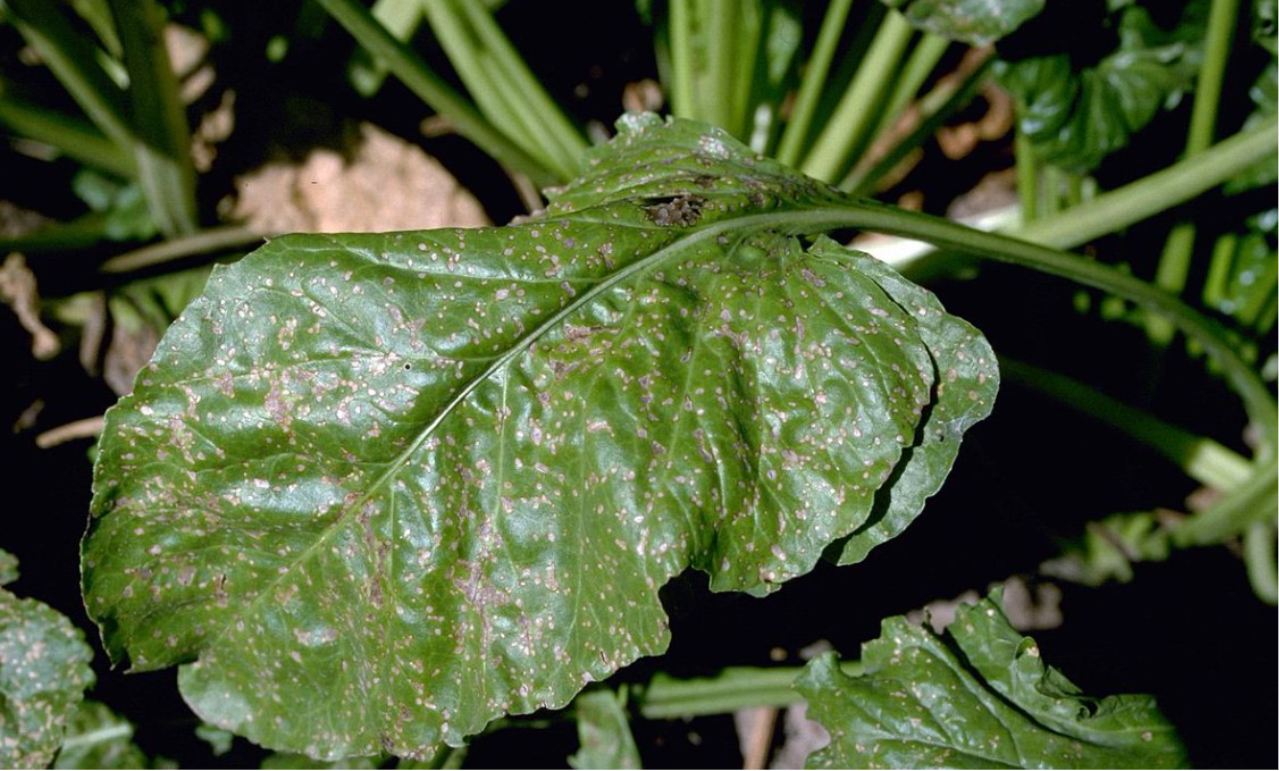Contents
CLASSIFICATION OF CERCOSPORA
Kingdom :- Mycota
Division :- Eumycota
Sub-division :- Deuteromycotina
Class :- Hyphomycetes
Order :- Moniliales
Family :- Dematiaceae
Genus :- Cercospora
The common hosts for Cercospora are sugarbeet, tomato, potato, tobacco, ground nut and many others, listed above. Infection can be observed when these plants are well grown in the fields.
STUDY OF HOST, DISEASES AND SYMPTOMS
Majority of the species of Cercospora are facultative parasites. Most of these often tum out as destructive parasits commonly producing Leaf spot diseases. It causes ‘Leaf spot’ diseases in the following plants.
- Cereals :-Narrow brown leaf spot C. oryzae on Oryza sativa, (rice, vern. chawal), C. sorghii on Zea mays (maize; vern. makka).
- Pulses :- canescens and C. cruenta on Vigna sinensis (cow pea)., c. cruenta and C. dolichi on Phaseolus (vern. moong), C. indica on Cajanus cajan (pigeon pea; vern. arhar), C. sesbaniae on Sesbania, C. sojina on Glycine max (soya bean), C. dolichi on Dolichos lablab (vern. sem).
- Oil seeds :- ricinella on Ricinus communis (castor; vern. arandi); tikka disease is caused by C. personata and C. arachidicola on Arachis hypogaea (ground nut; vern. moongphali), C. carthami on Carthamus tinctorius (safflower; vern. kusum), C. sesami on Sesamum orientale (sesamum; vern. til).
- Fibre crops :- gossypina on Gossypium spp. (cotton, vern. kapas).
- Fodder crops :- medicaginis on Medicago sativa (Alfalfa or Lucerne), C. traversiana on Trigonella foenum-graceum (vern. methi).
- Vegetables :- canavaliae on Canavalia ensiformis (sword bean), C. beticola on Beta vulgaris (beet root; vern. chukander), C. melongenae on Solanum melongena (briojal; vern. baingan), C. concors on Solanum tuberosum (potato; vern. alu), C. capsici on Capsicum annuum (chillies; vern. Mirch), C. batatae and C. bataticola on Ipomoea batatas (sweet potato; ven. shakarkandi).
- Fruit crops :-Sigatoka disease caused by C. musae on Musa spp. (plantain; vern. kela).
- Plantation crops :- coffeicola on Coffea arabica (coffee), C. longipes (causing brown leaf spot) and C. kopkei (causing yellow leaf spot) on Saccharum officinarum (sugar cane; vern. ganna).
- Narcotics :- nicotianae (causing frog eye leaf spot) on Nicotiana spp. (vern. tambaku).
- Condiment :- apii on Apium graveolens (celery; vern. ajmud).
During leaf spot diseases, fungus produces pale green spots on the upper surface of the leaf. These gradually tum yellow and ultimately become brown. The foliage finally dries up and is destroyed when disease is severe and destructive. Also, either the fruits are not formed or remain smaller
VEGETATIVE STRUCTURE OF CERCOSPORA
- Mycelium consists of multicellular, septate and branched hyphae.
- Parasitic hyphae is slender and intracellular. Inside the host, it forms lobed haustoria which penetrate the cells.
STUDY OF CONIDIA OF CERCOSPORA
- The hyplhal mass is aggregated beneath the epidermis as pseudoparenchymatous stroma.
- A tuft of short, septate, geniculate, (knee-like) thin walled and unbranched conidiophores emerge through the epidermis. Mature conidiophores are dark coloured, and somewhat thicker than the rest of the hyphae.
- Conidium is produced at the tip of conidiophore. This conidium is pushed to a side and the tip of conidiophore resumes its growth. Later, a new conidium is produced at its apex.
- At the places of attachment, conidia leave a scar after falling off.
- Conidium is inversely clavate (rounded at base and tapering towards apex) and straight or slightly curved. It is generally 4-5 septate (at times 12-15 septate).
- The colour of the conidium ranges from hyaline to ash-gray to light brown.
- The perfect stage of this form genus is Mycosphaerella
IDENTIFICATION
- KINGDOM – Mycota
- Chlorophyll absent
- Reserve food glycogen
- Cell wall of fungal cellulose.
- DIVISION – Eumycota
- A definite cell wall present.
- SUB-DIVISION:- Deuteromycotina
- Perfect stage absent, reproduction by asexual means only
- CLASS :- Hyphomycetes
- Mycelium sterile or bearing spores directly or on special branches.
- Not aggregated in pycnidia or acervuli
- ORDER – Moniliales
- Conidia borne on free condidiospores.
- FAMILY – Dematiaceae
- The mycelium, conidiospore and usually the conidia are brown or black in colour.
- GENUS – Cercospora
- Conidiophores geniculate.
- Conidia usually clavate.


Leave a Reply